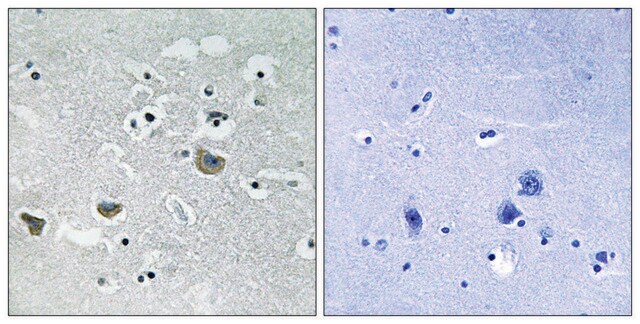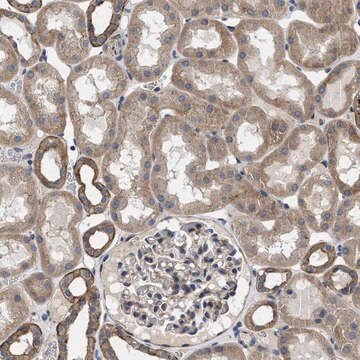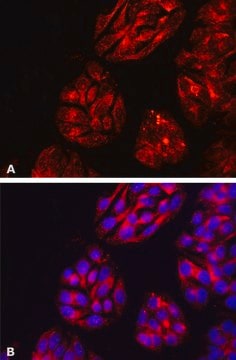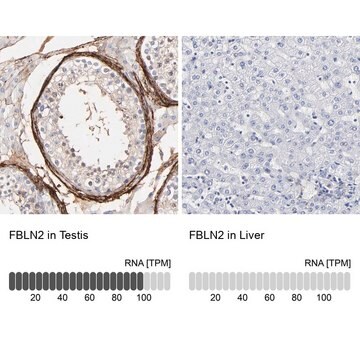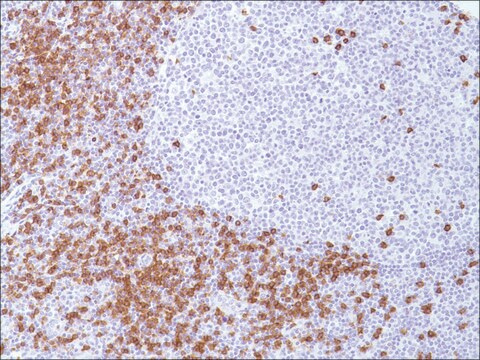SAB4700142
Monoclonal Anti-CD80-FITC antibody produced in mouse
clone MEM-233, purified immunoglobulin, buffered aqueous solution
Synonym(s):
Anti-B7-1
Sign Into View Organizational & Contract Pricing
All Photos(1)
About This Item
UNSPSC Code:
12352203
NACRES:
NA.44
Recommended Products
biological source
mouse
conjugate
FITC conjugate
antibody form
purified immunoglobulin
antibody product type
primary antibodies
clone
MEM-233, monoclonal
form
buffered aqueous solution
species reactivity
human
technique(s)
flow cytometry: suitable
isotype
IgG1
NCBI accession no.
UniProt accession no.
shipped in
wet ice
storage temp.
2-8°C
target post-translational modification
unmodified
Gene Information
human ... CD80(941)
General description
Cluster of differentiation 80 (CD80), also called as lymphocyte activation antigen 7-1, is encoded by the gene mapped to human chromosome 3q13.33. The encoded protein is mainly expressed on antigen presenting cells such as, neutrophils, macrophages and dendritic cells.
The antibody MEM-233 reacts with CD80 (B7-1), a 60 kDa single chain type I glycoprotein of immunoglobulin supergene family, expressed on professional antigen-presenting cells, such as dendritic cells, macrophages or activated B lymphocytes.
Immunogen
Extracellular domain of human CD80 fused to human IgG1(Fc)
Application
The reagent is designed for Flow Cytometry analysis of human blood cells using 20 μL reagent / 100 μL of whole blood or 1e6 cells in a suspension. The content of a vial (2 mL) is sufficient for 100 tests.
Biochem/physiol Actions
Cluster of differentiation 80 (CD80) interacts with its ligand, co-stimulator ligand CD28 or with cytotoxic T-lymphocyte protein 4 (CTLA-4) and facilitates the regulation of CD4+ and CD8+ T cell activity. Elevated urinary CD80 excretion leads to Fabry disease. CD80, which is expressed on surface of dendritic cells acts as a key co-stimulatory molecule and induces second signal for the proper stimulation of cancer antigen-specific naive T cells.
Features and Benefits
Evaluate our antibodies with complete peace of mind. If the antibody does not perform in your application, we will issue a full credit or replacement antibody. Learn more.
Physical form
Solution in phosphate buffered saline containing 15 mM sodium azide and 0.2% high-grade protease free BSA as a stabilizing agent.
Disclaimer
Unless otherwise stated in our catalog or other company documentation accompanying the product(s), our products are intended for research use only and are not to be used for any other purpose, which includes but is not limited to, unauthorized commercial uses, in vitro diagnostic uses, ex vivo or in vivo therapeutic uses or any type of consumption or application to humans or animals.
Not finding the right product?
Try our Product Selector Tool.
Storage Class Code
10 - Combustible liquids
WGK
WGK 2
Flash Point(F)
Not applicable
Flash Point(C)
Not applicable
Choose from one of the most recent versions:
Already Own This Product?
Find documentation for the products that you have recently purchased in the Document Library.
Prediction of Radix Astragali Immunomodulatory Effect of CD80 Expression from Chromatograms by Quantitative Pattern-Activity Relationship.
Ng MC
BioMed Research International (2017)
Association Analyses Identify Three Susceptibility Loci for Vitiligo in the Chinese Han Population
Tang XF
The Journal of Investigative Dermatology, 133, 403-410 (2013)
Increased urinary CD80 excretion and podocyturia in Fabry disease
Trimarchi H
Journal of Translational Medicine, 14 (2016)
Diana Campioni et al.
Haematologica, 91(3), 364-368 (2006-03-15)
The immunophenotypic analysis of ex vivo-expanded mesenchymal stromal cells (MSC) has so far been confined to single or dual staining analysis in normal subjects. In this study, using a four-color cytofluorimetric protocol, we demonstrated that cultured MSC derived from the
Emily Charrier et al.
Biology of blood and marrow transplantation : journal of the American Society for Blood and Marrow Transplantation, 20(10), 1501-1507 (2014-08-17)
Plasmacytoid dendritic cells (pDCs) initiate both innate and adaptive immune responses, making them attractive targets for post-transplantation immunotherapy, particularly after cord blood transplantation (CBT). Toll-like receptor (TLR) agonists are currently studied for pDC stimulation in various clinical settings. Their efficacy
Our team of scientists has experience in all areas of research including Life Science, Material Science, Chemical Synthesis, Chromatography, Analytical and many others.
Contact Technical Service